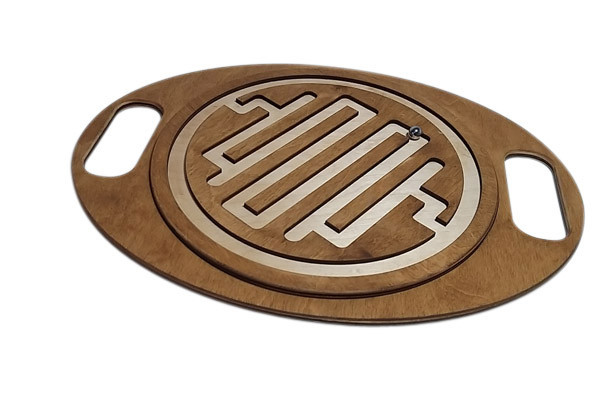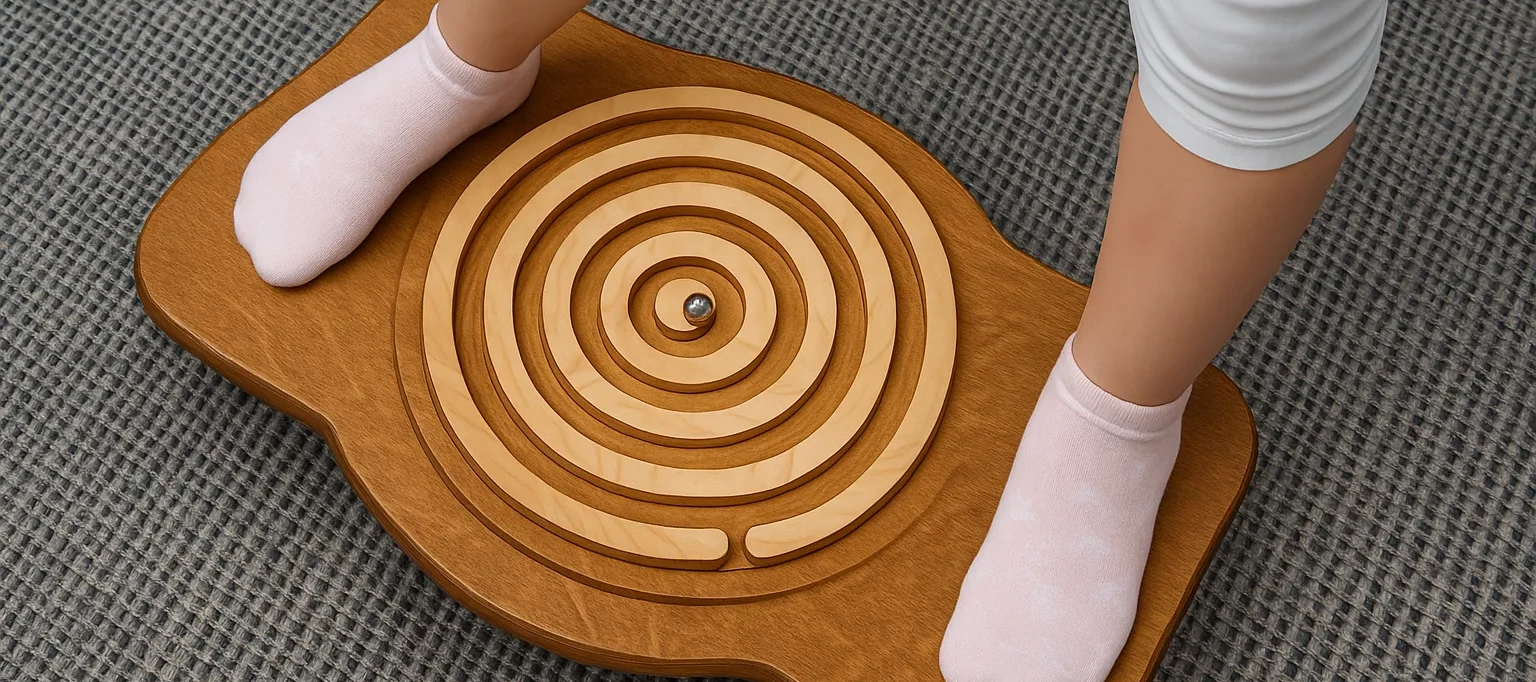Sub total: 0.00 BGN (0.00 €)
What is a balance board?
As we mentioned in our previous article "What is a balance board and why is it so useful for children?", it is a specially designed device for training balance and coordination. It is usually made of natural materials such as wood and includes a removable rounded base, and sometimes a ball maze at the top. It is suitable for young children as well as older ones and why not for adults too. As well as entertaining, it's a great tool for aiding physical and cognitive development.

Balancing on an unstable surface causes multiple muscle groups to work together. This leads to the development of various skills that are key in early childhood development. But have you ever thought about exactly what those skills are? In addition to providing fun and active play, this appliance is a true ally in building useful habits and abilities that a child will use for a lifetime.
In this article, we'll introduce you to 5 essential skills that a balance board develops - explained clearly and with a focus on early development. Whether you use it at home, in kindergarten, or while playing outside - you'll understand why this seemingly simple device is so valuable for motor and cognitive development.
1. Development of balance and coordination
From an early age, children begin to develop a sense of balance through crawling, standing and walking. Such an appliance greatly helps to strengthen and develop these processes in the best way. The child learns to control his body movements by coordinating the actions of the legs, arms and torso.
Such stimulation is essential for building a stable gait and body control. When a child regularly exercises his balance, he more easily builds the connection between brain and muscles. This not only helps better coordination in everyday movements, but also builds the foundation for learning more complex physical activities.
Good coordination makes it easier to learn skills such as cycling, jumping rope, swimming or even dancing. Children who develop these abilities earlier often feel more confident in their bodies, do better in sports games and experience more pleasure from movement. And when the body moves confidently, the mind follows with equal certainty.
2. Development of fine and gross motor skills
The movements performed on the balance board activate both gross and fine motor skills. The child trains the large muscle groups of the legs, back and arms, while at the same time precisely controlling the actions of the feet.
When the board has bead mazes, as Little Fingers' does, fine motor skills are also involved. The child strives to guide the marble along a set path using small but precise movements. This combination of large and small muscle groups is especially valuable between the ages of 3 and 6.
3. Concentration and patience

Maintaining balance requires focus. While trying to maintain stability on the board or guide a marble through a maze, the child must remain focused. This helps to train concentration and the ability to focus on more than one task - on the one hand to keep the balance and on the other to get the marble through the maze.
The most valuable result is that the child learns patience. He may not succeed the first, second or third time, but the game encourages him to try again and again. In this way, it develops resilience and intrinsic motivation to overcome challenges.
4. Spatial orientation and logical thinking
Balancing on an unstable foundation requires constant space estimation. The child learns how to position his body to avoid falling. These processes develop spatial thinking and the ability to anticipate consequences of given actions. This is the basis for more complex logical tasks that the child will encounter in the later years of his or her education.
5. Emotional resilience and self-confidence
When a child succeeds in staying on the board or moving the ball to the finish line, they experience joy and satisfaction. This success makes him believe in himself and his abilities. This is of utmost importance in building a strong self-esteem.
Facing small challenges and dealing with them also trains emotional resilience. The child learns to control his emotions, not to give up and to cope even when it is not easy.
When and where to use a balance board?
The balance board is an extremely versatile and easily portable device that can be used both at home and outdoors. After the third year, when the child already has a stable gait and better coordination, you can safely include it in everyday play.
- At home: use it on a flat, non-slip surface - carpet, rubber or mat. You can offer free play where the child explores his movements, or set a task - for example, to move the ball from one end of the maze to the other.
- Outdoors: during the warmer months, you can take the game outside - to the park, in the yard or during a walk. It's lightweight and easy to carry, making it great for active outdoor play.
- Social play: one of the most fun options is to get other kids involved - timed races to see who can move the ball the fastest through the maze, games trying out different poses and movements, or even inventing different uses for the board together. This not only develops motor skills but also encourages team play, patience and healthy competition.
An investment worth making
Balance board isn't just fun - it's an effective and affordable way to help your child develop key skills. From coordination and motor skills, to logical thinking and confidence, the benefits are multifaceted.
When choosing a toy that truly develops, don't underestimate the potential of this simple yet powerful tool. With a balance board, every step forward is a step towards confident growth.




